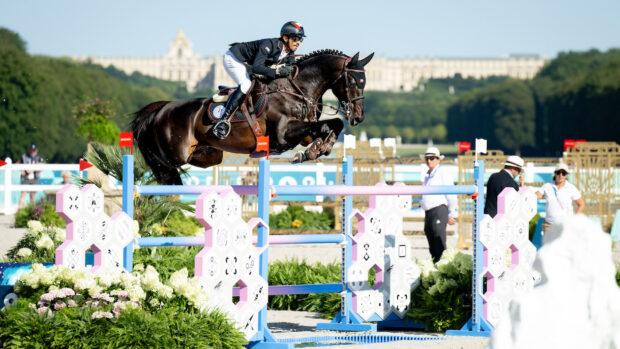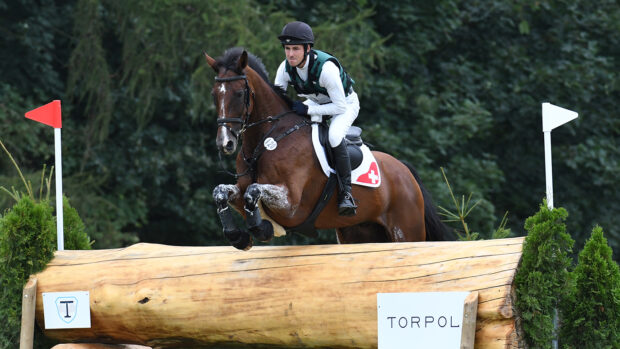Placing your horse on a correct take-off point will encourage him to make a good shape over a jump and increase your chances of clearing a fence successfully.
This is where the rider’s ability to “see a stride” comes into play.
Seeing a stride is the ability to pinpoint the best take-off spot and ride positively in order to reach it. To judge where the ideal take-off point is, you will need to take into account both the horse you are riding and the type of fence you are jumping.
You want to aim to come in fairly close to the base of your fences, but not to the point of burying your horse into the bottom where he does not have the room to take off.
A horse which is obedient, well schooled, supple and balanced will be able to get much deeper into a fence than one which lacks education and is stiff or resistant.
The type of fence you are tackling will also dictate the ideal take-off point. For example, the horse needs to take off closer to the base of asquare parallel than when jumping a vertical, and you need to be closer still to clear the height and distance of a triple.
Ready for take off
Having determined where the appropriate take-off point for your horse is, you need to master the skill of bringing your horse to that spot with impulsion and with a good balance and rhythm.
The last three strides of your approach are the most important and interfering at this point can cause your horse to become confused and distracted from the job. Similarly, getting your horse very short then launching him towards the fence will only create problems.
You need to be able to look through your turn towards each fence, accurately judging the distance you are from it and gauging how many strides of what length you will need to arrive at the correct take-off point. If you need to make any adjustments to the length of stride, do this earlier rather than later, so your last strides are of equal length, with the final onebeing the most powerful.
Initially, you will find it easier to determine this from three strides away, this will improve to more strides as you become more accurate.
Using a placing pole or even several groundpoles in front of the fence can help put your horse on the correct take-off point. This exercise will also:
Making a mark
You can also position a marker a measured number of stridesaway from a fence to help you judge take-off points.
Count out loud the last three strides of your approach, and then progress to counting four and then five strides away. This exercise will also help encourage you to keep breathing if you tend to hold your breath on approaches.
Horses pick up on your breathing and may hesitate if you are not breathing evenly.
If you meet a fence wrongly while schooling, try again but turn in a different place to approach it. If you meet it correctly this time, ask a helper to place a marker on the ground so you can judge where to turn on successive attempts. You can then consistently come into the jump on a good stride, and learn to gauge it more accurately.



